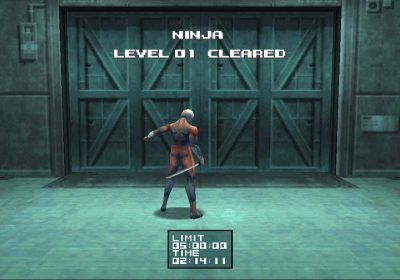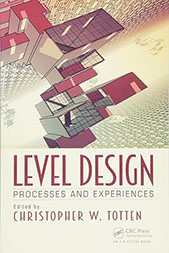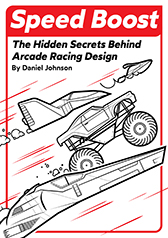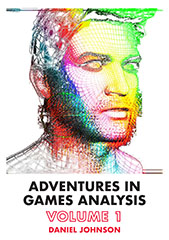Heavy Metal Blues
June 1st, 2008
In a previous article where I was sharing my thoughts on a few gaming sites I mentioned that Kombo had a feature that I wanted to talk about later on. Well now it’s time to discuss it.
Probably since the start of this year I have bene working on piecing together a series of posts looking at the various series questions that Metal Gear Solid 4 should answer when it gets released on June 12th. I had been tirelessly doing my research on this for months investing tens of hours into the project while getting little writing done.
A FEW SPOILERS FROM HERE ON OUT
What I realized was that where the series currently stands there are just too many unknown factors for me to piece together a coherent articles. Also when it comes to clarification on certain issues such as the relationship between Ocelot and Solidus Snake at Shadows Moses descriptions are quite vague which opens a lot to interpretation.

So in the end it just became way too hard and I didn’t want to gloss over and make unrealistic assumptions on various plot points.
Fortunately Nick Michetti over at Kombo has been writing a feature titled: Heavy Metal. This feature puts various questions and plot points under the microscope to make a bit of sense of it all. There are already 7 installments of this series and overall it is quite good. I have noticed a few minor errors but it’s nothing that I wouldn’t have made myself.
So if you are interested in such speculation then I recommend that you take a look at the feature I never could write myself:
Heavy Metal Features #1-7
Of course, if you too need your own refresher then hopefully the following videos could be of some assistance:
MGS2 – Who are the Patriots (#1-#8)
Metal Gear Solid Portable Ops Ending
DP’s Games Crunch 2019 Part #2
January 12th, 2020
The turn of the decade has prompted me to revive this ‘year in review’-ish article series I began 11 years ago (has it been that long? Wow!). The list below catalogues my brief thoughts on the games I’ve completed over the past year.
Yoshi’s Story (N64)
Pretty bad for a Nintendo EAD game.
Mischief Makers (N64)
A Treasure game through and through. Inventive and diverse level concepts. Some are touch and go. Few outstay their welcome. Amazing boss battles. Tuning is 90% of the way there, but some extra polish would have been welcomed.
Killer Instinct Gold (N64)
I’ve always been attracted to KI’s distinctive character designs, but the combo system reduces the game to a static war over input strings.
1080 Snowboarding (N64)
As a mega fan of 1080 Avalanche, I wanted to love the original, but couldn’t execute a 1080 despite hours of practice. Failing to land particular jumps also marred the match race experience. A technical marvel which looks and runs far better on the Virtual Console than on original hardware.
English of the Dead (DS)
A fun curio I picked up when travelling in Japan earlier in the year.
Battalion Wars (GCN)
Like other genre mash-ups, Battalion Wars ends up having to compromise the strategy and third-person shooter essence to keep its gameplay together. Take for example, the challenges of balancing the early 2000s third-person camera and zoomed out strategy cam. The camera perspective during action gameplay limits the player’s view of the battlefield. With less information to work with, it becomes harder to make informed decisions and respond “just in time” to a constantly evolving game state. The unit design space and mission designs are great, but the aforementioned limitations shift the gameplay towards perspective management.
Battalion Wars is one of those games I invested a good deal of energy into, even though I recognise the weaknesses of the game’s design. Some friends and I recorded a super productive but yet-to-be-releasedi podcast working through the contradictions in BW’s design.
River City Ransom (NES)
Feels like a demake of the Yakuza games. People rightfully say that River City Ransom was ahead of its time. The secret kunio-kun game Nintendo World Cup was one of the first games I owned, so it was nice to see the same sprites and similar mechanics in their original manifestation.
Battletoads in Battlemaniacs (SNES)
Bad game. Contextual attacks interfere with the player’s agency. Story sequences make no sense. Bad 3D problems.
Superscope 6 (SNES)
Weird. Both the Blastris games are pitifully easy and barely warrant their own existence. On the hardest difficulty, Blastris A withholds the piece you need to win to artificially prompt a loss. Blastris B is super slow. Conversely, the two shooting games are pretty tough.
Super Punch-Out!! (SNES)
Super Punch-Out!!‘s sound effects, animation, and use of dramatic pauses are highly satisfying. However, fights need a dynamic element to diversify the scripted sequences and free the player’s learning process from dry rote.
The final two boxers broke the fairness test for me.
Super Metroid (SNES)
After subjecting myself to a number of rather strict and challenging titles this year, returning to Super Metroid reinvigorated my love for the medium. Most of my old SNES carts have kicked the bucket, but Super Metroid fittingly lives on.
It’s amazing that people put Symphony of the Night in the same sentence as Super Metroid. SOTN isn’t in the same league. Metroid’s room challenges are finely tuned and each unique within the game’s diverse palette of game concepts. Space and time play breathe dynamism into combat, with a strong foundation of aiming and moving through space. Unlike SoTN’s litany of abstractions, Super Metroid communicates its confrontations visually.
The atmosphere and macro level progression are medium-defining.
Metal Gear Solid: VR Missions (PS1)
One word: redundant. Metal Gear Solid’s design space is much broader than it is deep. VR Missions explores the nuance that is there, but it ain’t enough to substantiate a game of its length. A decent proportion of challenges are either arcanely nuanced or 100% gimmicky lolz (never on the level of Super Monkey Ball 2 crazy, though). Some challenges are super strict. Most others are a cakewalk. The slew of missions is fairly inconsistent.
The package’s nuanced-focused nature draws out quirky examples of poor tuning of game mechanics. For example, the way Snake holds out his left hand when holding a grenade makes him appear orientated slightly to one side. The contradicting visual reference makes it difficult to throw grenades straight.
The aiming is similar to Metroid: Other M, but Snake doesn’t register enemies as quickly and the bullets don’t home. Aiming from a distance is futile.
Final Update
In terms of my own writing, I spent the entirety of 2018 rewriting Adventures in Games Analysis and completing Speed Boost (both of which I endeavour to release this year). In 2019 I didn’t do any game-related writing, aside from some research for the next Game Design Companion book. Overhauling my original writing with the help of a professional editor was a laborious but necessary experience and I wanted to give myself a break before getting back in the game. In a few months, I hope to invest more time into the next GDC book.
3DS Demo Impressions Part #1
April 28th, 2014
Last Christmas, Santa gave me a 3DS. I’d been hoping I’d get a 3DS because Nintendo had their Super Mario 3D Land promotion going, where anyone who registered their system and a copy of 3D Land would get a second game free. A great opportunity to jump on the 3DS bandwagon, and with a new Mario and Zelda game no less. Unfortunately, the eShop was facing connection issues, thanks to the Pokemon Bank outage, so I waited a few days and then downloaded some demos instead. A few months later and I still hadn’t put my notes up onto the blog. So here’s what I played and what I thought:
Metal Gear Solid 3: Snake Eater 3D
- Wow. This game looks amazing in 3D. It seems that the colouring and visuals were modified to make the 3D effect more pronounced. In any case, I noticed snakes, birds, butterflies, and other creatures that weren’t so apparent in the original (maybe more were added?). The 3D also makes it easier to judge the distance between Snake and a guard. Playing Portable Ops Plus for the PSP recently, I would often bump into enemies or attack before I reached them. So I can appreciate this change.
- The camera controls are awful; however, the menus are easier to navigate with the touch screen, and the nestled CQC d-pad commands and other visual prompts remove the need to remember the layers of input complexity that were problematic in the original.
- The other thing about the bottom screen is that it frees up the interface on the top screen while also adding information that is locked behind the pause button in the original. With more intel available, it’s easier to make informed decisions and remain undetected.
- Overall, the 3DS version is a lot cleaner than the original. When I replay the PS2 game later, I’ll have more to say on Snake Eater.
Rayman Origins
Playing in the Shade (console version)
- Visual flourish is valued more than function, and to a fault. This is especially true of Playing in the Shade, where the player must keep wind of a fast-moving target and has less time to read the game world.
- In Playing in the Shade, the strict progression shrinks the space for player expression and puts an emphasis on memorisation and reflex skills.
- In Swinging Caves, there’s a locked cage in a secret room. Later, the same cage appears in the final room, representing the end goal. Given that the first cage is in a seemingly secret room, it’s not clear whether opening either cage ends the level or if only the second cage in the final room ends the level.
- It’s neat how the projectiles in the shmup level can bounce off certain surfaces and how enemies can be sucked up and used as ammo.
- The level arrangements didn’t really gel together or build in any meaningful way, but I’d need to play more of the game to make a clearer statement on this.
- It’s odd how the levels use the 3D effect while the loading screens don’t. The game looks kind of blurry overall.
Denpa Men: They Came By Wave
- I only had enough radio waves in my house to catch two other Denpa Men. This made completing the demo quite tricky.
- There’s far too much automation in the battles. This simple game basically plays itself.
Epic Mickey: Power of Illusion
- Starts off the demo with 5 minutes worth of stills and text, and then another minute of text.
- Adding objects only requires drawing the outline, but removing requires colouring.
- The drawing and erasing mechanics, at least in the demo, are only applicable in pre-set situations to open simple locks and aren’t engaging enough on their own. Zelda: Phantom Hourglass put similar mechanics to better use, with varied and deep applications, years ago.
Castlevania: Lords of Shadow – Mirror of Fate
- No cutscenes or text. Just straight to the gameplay.
- I was originally concerned about the lack of spatial dynamics in the combat, but the jump is high and floaty enough that verticality is significant, and there are enemies that require mid-air attacks.
- The combat is more like a 2D God of War than any of the SOTN-esque games. This is good cause those games were stuffed full of arbitrary systems that didn’t greatly support the core combat.
- To rise above hack and slash convention, though, the whip mechanics should be more dynamic, the secondary weapons should mix up the skill set, and there should be more interplay. For example:
- Physics-based whip swinging. Swinging in the demo is single static move. Momentum could be used to swing through boarded up doorways or to knock enemies over.
- The whip should knock things about in the environment. For example, the lamps at the castle entrance. What about other environmental interactions? How could these interactions be tied into the combat?
- The bomb boomerang adds aiming in 2D space and timed detonation with enemy hit-stun. What about the other secondary weapons?
- I like how blocking at the right time opens up an opportunity to counter. How else can back-and-forth counters be facilitated?




 Game Design Companion: A Critical Analysis of Wario Land 4 - $7.99
Game Design Companion: A Critical Analysis of Wario Land 4 - $7.99 Level Design: Processes and Experiences
Level Design: Processes and Experiences Speed Boost: The Hidden Secrets Behind Arcade Racing Design - $5.99
Speed Boost: The Hidden Secrets Behind Arcade Racing Design - $5.99 Adventures in Games Analysis: Volume I - $5.99
Adventures in Games Analysis: Volume I - $5.99







